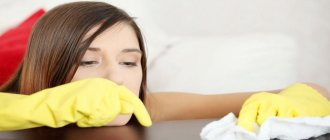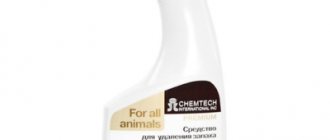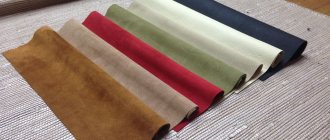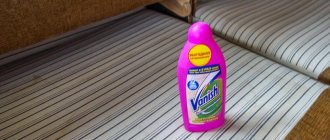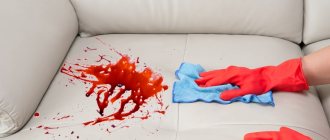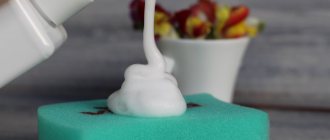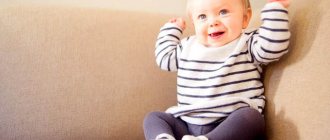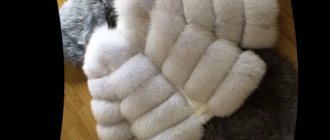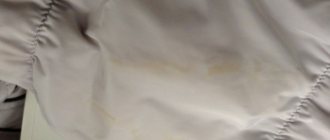How to remove urine stains from sofa upholstery?
One of the most persistent and unpleasant stains is urine stains. This happens especially often in families with small children and elderly people who have poor control over urination. In addition to the fact that such stains deplete the unpleasant odor, they also greatly damage the sofa.
Instructions:
- In order to get rid of this kind of contamination, it is necessary, immediately after the child has peed, to place terry towels or paper napkins on the sofa and blot until the fabric becomes dry.
- It is necessary to completely soak up the remaining urine so that it does not penetrate deeply into the upholstery of the sofa. Now you need to soak a new kitchen sponge in water, lather it with laundry soap, and thoroughly rub the stains.
- It is necessary to lather and remove the foam several times to be absolutely sure that there is no trace of urine left there. After such manipulation, it is necessary to moisten a damp cloth and remove any remaining foam; this must be done several times.
- To completely remove the smell of urine, you need to dissolve 3 tablespoons of vinegar in 5 liters of warm water, soak a brush in the solution and apply the solution to the areas that have just been cleaned of urine.
- Next, you need to rub, after which you need to blot the area several times with a napkin or towel. It is necessary to dry quickly; for this you can use a hair dryer or iron. Never iron the upholstery with direct contact between the fabric and the iron.
- Cover the damp sofa with thin film or gauze. Do not allow the sofa to dry on its own, without using heating devices. It is long drying that contributes to the formation of streaks.
Cleaning the sofa
Getting rid of it easily
You can easily get rid of water stains on various surfaces by understanding the structure of the materials on which the stains formed. Although this is not entirely easy, we will teach you how to understand this matter. This section of the article on water stains will be devoted to these materials. In it you will find not only simple and proven methods for removing stains, but also learn how to actually prevent their formation. It is noteworthy that almost any surface can be removed from traces of water, and materials on which it is impossible to remove water stains are paper and cardboard.
Natural and artificial fabrics
People most often use fabric products in their lives, because clothes, shoes, bags and household items (bed linen, towels, etc.) are made from it. It is things made from fabrics, natural or artificial, that most often come into contact with water, and most of them easily absorb liquid. The best way to get rid of water stains, both pure and “enriched” with all sorts of things, is washing. Soap and laundry detergents work well with clean water stains, but sometimes you need to use an oxygen-based or other stain remover. Almost all fabric items are easy to wash, but sometimes it happens that the product cannot be washed at home. Then you can resort to the following trick:
- Apply some freshly squeezed lemon juice to the stain and then rub it with a soft cloth in quick circular motions. This method is good for cleaning jackets and down jackets made from bologna or other jacket fabric.
- Using a spray bottle, apply water and any detergent to the stain, and then rub it with your hands, foaming as you do so. Leave on for five minutes, then rinse thoroughly with cold water. Products processed using this method must be dried using cold air with strong flow. For this purpose, you can use a fan or hair dryer equipped with a similar function.
- Wipe the stain with a solution of water and 96% alcohol diluted one to three, respectively. This method works especially well on silk and wool items. Sometimes they recommend using vodka, but in reality you shouldn't do this. Vodka has additives and evaporates from the surface much worse than alcohol and water. After applying the mixture, place a dry cloth made of cotton threads on top of the stain and press it lightly with your hands.
You can remove a stain from a drape coat by steaming the fabric with an iron through a damp cloth. To remove stains from light-colored fabrics, it is recommended to add a little vinegar to the water. One tablespoon of acid per liter of water will be enough. Once the stain has disappeared, dry the item as usual and then gently brush it with a clothes brush.
If a water stain appears after washing, this indicates that the product was poorly rinsed. Wash again with a minimum of detergent, and then rinse thoroughly in water with conditioner. The latter will not only help wash away powder residues and soften the fibers, but also give things a fresh smell.
If the stain appears on a product made of natural or artificial silk, organza or chiffon, then the described method may not help. The fibers of silky fabrics do not absorb water, meaning it drains. In this case, it is recommended to rinse again. You need to add vinegar to the water at the rate of three tablespoons per liter. The acidic environment will completely break down the alkalis contained in the water and speed up the drying of the fabric.
Leather
Water stains on leather most often appear on items such as shoes and bags, but sometimes car upholstery, as well as soft sofas and office chairs, also suffer from water. The consequences of careless handling of water, exposure to rain or snow look, to put it mildly, unattractive. White and yellow deeply ingrained smudges of unpredictable shape greatly spoil the appearance of products. It does not add beauty and a difference in color, which is especially noticeable on light-colored items.
Most often, such incidents occur on lightly colored products made from thin porous leather, and their appearance is due to the fact that the product got wet and was not dried properly.
After tanning, animal skin remains a breathable material, but all its other properties are completely lost. It acts as a sponge, but remains visually dry. When entering a high-temperature zone, for example, when drying products near heat sources, the skin begins to lose moisture at a rapid pace. Salts and oils that enter the water due to the water cycle in nature, in combination with household and street dust, form “unimaginably beautiful” patterns that cannot be removed by hand or wiped off with a dry cloth. But despite this, do not despair. You can remove such stains using thick shoe polish or Vaseline. Just remember that the latter is a medical preparation, used for “living” skin and is more of an emergency measure to restore the surface than a means for daily use on “dead” skin!
For leather products painted in white and light colors and shades, you can use “saving” foam made from milk and egg white, as well as regular tooth powder.
In addition to all of the above, a solution of water with ammonia or ammonia and any liquid dishwashing detergent or liquid hand soap will help deal with smudges on the skin. To a glass of clean water you need to add a tablespoon of ammonia and a few drops of liquid detergent. It is convenient to apply such a mixture with a porous sponge or from a spray bottle. After applying the cleaning composition, you should immediately rub it with a soft cloth and do not allow it to be absorbed. This product should be used in a well-ventilated area away from heat sources. Can be used on products of any color.
All you need to do to get rid of water stains on the leather is to apply a special product (shoe polish, oil-based impregnation), and after twenty minutes, rub it, polishing it with a flannel cloth until it shines. It is important to do this at a time when the product is completely dry. After the leather at the site of water contact has regained its previous appearance, the same product should be reapplied, treating the entire surface of the shoe. For colored shoes, it is recommended to use a clear cream, while for black or brown items, creams of the corresponding color can be used.
In order to prevent the formation of stains on leather products, you need to take care of the leather in advance: saturate it with special products that repel water, dust and dirt. These can be either sprays for treating the surface of furniture and clothing, or shoe polish based on beeswax (less commonly, paraffin). In addition to the fact that these products will help maintain the expensive look of your products, they will also protect your skin from drying out and exposure to different temperatures.
Suede and nubuck
Suede and nubuck are the same leather, only turned inside out and treated in a special way. Such products are distinguished by their softness, beauty and high cost, and also require careful handling. Suede shoes are not recommended to be worn in wet weather, because the high porosity of the material easily absorbs water, which is never clean.
If it so happens that water gets on a product made of delicate suede, dries out and leaves stains, you should do the following:
- Dry the product and then comb it with a special brush for cleaning such material.
- If the first method does not work, then wipe the leakage areas with a damp, lint-free cloth, and then try a simple folk method: rub the stain with the inside of the crust of sour rye bread.
We recommend: How to remove stains from soap bubbles on clothes - we’ll put everything on the shelves
On dry boots made of light suede, you can remove water stains using talcum powder. Sprinkle it over the dirt and leave it for five minutes, then carefully brush it off with a brush.
Contrary to the statement that products made of suede and nubuck cannot be washed, I would like to say the following: the difficulty is not so much the washing process as the drying, during which the material shrinks and wrinkles. If you find water stains on your gloves, then this item of clothing can be washed. The technology is simple:
- Put it on your hands.
- Lather with liquid hand soap.
- Wash thoroughly and completely, then dry as thoroughly as possible with a towel.
- Dry the product without removing it from your hands.
You can try to salvage wet clothes, shoes or accessories before they become unsightly stains. To do this, you need to cover the places where water gets in with a thick layer of salt and leave it in such a “coat” for two days. After time has passed, remove the salt and clean the areas with velvet or a cloth for wiping glasses, then treat with turpentine and brush with a special brush.
Another, no less effective remedy for eliminating stains on suede is grated potatoes, the pulp of which is applied to the affected areas. Just be sure to squeeze the juice out of this mass to avoid getting the product wet.
Preventing water stains on suede and nubuck is difficult because these materials cannot be treated with a water-repellent compound or treated in any other way. The best solution in this situation is to prevent the formation of stains by careful handling.
Parquet and polished wood
Water stains on varnished parquet floors and furniture leave whitish streaks. They eat deeply into furniture and floors and spoil the appearance. Getting hot water on such surfaces is considered especially dangerous, because it quickly penetrates microcracks in the varnish and saturates the wood. Unfortunately, it is very difficult to get rid of such stains, and they remind you for a long time of themselves and of the carelessness of the person who caused them. This applies more to furniture.
You can try to remove stains from furniture in the following ways:
- Cover with flour and rub with a soft cloth, then polish with polish or a cloth with a few drops of vegetable oil.
- Treat with alcohol and dry the stained area with cold air, and then rub with hot vegetable oil and wax. The protective mixture must be left for at least an hour, after which it must be carefully collected with a sponge, and the restored area must be polished to a shine.
- Fill with sifted ashes, and then drop a little vegetable oil into it. Polish with flannel.
- Cover with salt and leave for an hour, after which remove the salt with a damp cloth, and cover the area with wax and polish.
If a stain has formed on the floor, such an oversight can be removed using minor repairs. Of course, it is quite labor-intensive, but it can definitely get rid of unsightly streaks forever.
First of all, using a stationery knife, you will need to remove the layer of varnish. This process is quick because the varnish usually swells in this area. Once you have access to the wood, it will need to be sanded and dried. The dry product will need to be covered with stain in the color of what was used previously. It is not a fact that you will be able to achieve the same shade as the wood next to it, but there will definitely not be an unsightly white spot. When the impregnating composition dries (and this usually takes a day), you will need to apply a varnish coating in two layers. Place the first one exclusively on the area where the water stain is removed, and with the second layer cover the area larger than the stain in size.
Polymer compositions
Water stains also remain on polymer products. Most often they suffer:
- plastic used to cover walls and ceilings;
- acrylic bathtubs;
- "aprons" in kitchens.
In simple situations, when the stain is relatively fresh, it is enough to moisten it with water and wipe the surface dry. But difficult and old stains can be dealt with using special products for caring for these surfaces. The only condition is to follow the instructions for use of this product. Information about this must be on each bottle.
Plaster and drywall
Water stains on plaster can ruin efforts to improve your home. Their appearance can be caused not only by the oversight of neighbors above, but also by excessive humidity in the room, especially when working with drywall. In addition to the fact that drips worsen the appearance of the room, they can also cause harm. The thing is that there was high humidity in the places where the spots formed and pathogenic flora could develop. It is possible that over time, mold will appear in places with water stains.
There are several ways to get rid of stains left by water (and not always clean water). The first is visual whitening of the stain and removal of its external signs, the second is complete removal.
But in both the first and second cases, you will need to get to the spot itself. If the surface is covered with wallpaper, then it needs to be removed. Unfortunately, it will not be possible to remove the drip from the paper, so as an option, you can put a patch of a visually suitable shade from the remains of the wallpaper. Having gained access to the plaster, the surface should be treated with a chlorine-based gel bleach or the well-known “Whiteness”. These products are used exclusively undiluted and left on the surface for about three hours. When the stain is fresh, one treatment is sufficient. Otherwise, you will need to repeat the process after drying.
In the second case, if the stain was formed during repairs, then remove part of the plaster and apply a new layer. Dry it thoroughly and treat it with soil that protects it from dampness and mold.
Tiles and other ceramics
Ceramic tiles are unable to absorb water, so stains on them occur exclusively on the outer surface. Simple water stains on ceramics can be removed with two rags. One should be wet and the other dry. Both of them should be made of a material that does not leave behind lint. It will be enough to wipe the areas with water stains with a wet cloth and then wipe with a dry cloth - and there will be no trace left of them! Lacquered surfaces can be polished in a clockwise circular motion.
Tough stains caused by dirty water may require the use of special products designed to remove rust or salt deposits. Solvents are applied strictly in accordance with the instructions and be sure to use personal protective equipment when applying.
Chromed products and stainless steel
Water stains on chrome and stainless steel not only detract from their appearance, but can also trap dirt. Over time, dirt eats away at the coating and the products begin to darken. To prevent this situation, water stains should be removed as quickly as possible. This can be done using a soap solution or using special chemicals. The first product shows excellent results on fresh stains, the second can be used both in everyday cleaning and to get rid of old, petrified stains with salt build-ups.
From a product cleaned by any of the methods, you need to remove the remaining active substances, and then wipe dry and polish.
Laminate and floor coverings
Water stains that appear on laminate or other floor coverings can be removed by washing, laundering, dry cleaning or polishing. The choice of method will directly depend on how hygroscopic the product is.
A stain on linoleum can be removed with a soap solution applied to a rag. There it needs to be kept for a short time, and then the floor should be wiped dry. Water leaks from the back of the coating can be removed with any product containing active chlorine.
Water stains on laminate flooring can be removed using silicone or wax-based polishes. They rub stains, and then these places are polished.
Water leaving a mark on the carpet is no fun. Even a drop of clean liquid can easily form an ugly stain. Light-colored coatings are especially vulnerable, although stains on dark carpets can be very noticeable. It is very difficult to get rid of water stains on such surfaces without the help of dry cleaning. The difficulty is that the product cannot be removed from the floor, and at the same time it is impossible to dry it properly.
Plastic and glass
Water stains remain on plastic and glass. Dishes, household appliances, computers and laptops, TVs and monitors, phones and other gadgets suffer. Usually, traces remain if inappropriate means were used to wash these products, or if the products were already dirty (dusty, greasy, etc.) before water hit the surface.
We recommend: How to quickly wash off red and other henna completely at home?
You can get rid of stains on plastic by washing the products again, on glass and mirrors - using special sprays containing alcohol, ammonia or vinegar. After the products have been processed, it is recommended to wipe them dry. The best solution would be a microfiber cloth - a material that absorbs liquids well and holds it inside until it is wrung out. After removing the water, it is recommended to rub the glass and mirrors with a dry, lint-free cloth or regular paper napkins.
In the old days, newspapers were used for polishing, but now the quality of printing has changed, and it is becoming increasingly difficult to achieve the desired effect. Household appliances that have water stains on them can be simply rubbed with a soft cloth, and computer and smartphone screens can be rubbed with a special composition that will not only remove dried drops, but will also repel electrified dust.
Metal
Water stains on metal should be removed as soon as possible. Material that is not painted or otherwise treated is particularly vulnerable. It will not be a discovery to anyone who is caustic that metal is highly susceptible to corrosion. And if there were stains left, then water certainly got on it. Remove traces of water from iron and other metal using metal brushes, solvents and special compounds.
Stains from painted metal are removed by washing and wiping the treated area dry. In rare cases, when the stain is not washed off the first time and leaves behind a trace of salts, it is recommended to soften it with vinegar and only then rinse with clean water.
We hope that the time spent reading this article will not be considered wasted, and the dried stains that remain on your things after water gets on them will no longer scare you!
How to remove water stains from sofa upholstery?
Instructions:
- To finally get rid of the smell of urine and traces of water, you need to prepare a special solution. It will help remove residual urine, so it will help stains disappear. It is necessary to mix 100 milliliters of water with a teaspoon of soda in a small bowl and shake.
- After this, you need to measure out 100 ml of hydrogen peroxide, which can be purchased at a pharmacy and pour into the container. It is necessary to pour the solution into a spray bottle and apply it to the dried sofa after using vinegar.
- As a result of exposure, a lush foam is formed, which will help remove residual urine and stains. It is necessary to leave the foam on the sofa for several hours, and then remove it with a damp cloth. It is worth drying the upholstery again using heating devices, an iron or a hairdryer.
Stains after cleaning the sofa
Effectively remove rust from any clothing
Remove all stains from the edges to the center, using light rotational movements, until the stain disappears completely. You can use a dropper, brush or cotton swab to touch the clean fabric around the stains as little as possible. Lemon juice works well to break down many types of stains. It is applied to the stains pointwise and left for half an hour, and then rinsed with water with a small addition of detergent. An excellent remedy is a mixture of peroxide and ammonia in equal quantities. After treating the stains, wait 30–40 minutes and rinse the area with water, repeating the procedure if necessary. Salt solution also helps - 1 tbsp. l.
How to remove stains from sofa upholstery after cleaning upholstered furniture?
Stains appear for one simple reason: the sofa dries out and gets wet unevenly. Therefore, try to carry out not only partial cleaning, but also complete cleansing. It will not be possible to wash the stain separately, because its edges will remain. After drying, you will notice that streaks have formed.
To prevent this from happening, you need to apply cleaning products to the entire sofa. To avoid streaks after cleaning, many experts recommend vacuuming upholstered furniture once a week with a regular vacuum cleaner using dry cleaning. Once every three months you need to knock out the sofa.
To prepare upholstered furniture for stain removal, you must perform the following manipulations:
- Dilute a glass of vinegar and 4 tablespoons of soda in 5 liters of water, stir the mixture
- Soak an unwanted sheet or white cloth in it. Gently wring it out so that it is not wet, but slightly damp.
- Cover the upholstered furniture and gently beat it with a beater. Do not hit as hard as you can, so as not to damage the upholstery and filling of upholstered furniture.
- Thanks to such manipulations, all the dust will transfer to the fabric. This will make it dirty and dusty. You will need to rinse the fabric several times during the beating process.
- Thanks to this action, you will be able to transfer the dust to the fabric, and the sofa will become cleaner and there will be no streaks left after washing.
Cleaning the sofa
Folk remedies and recipes for cleaning doors
- Vinegar. The most common anti-whitewash remedy is vinegar. The solution is prepared in the following proportion: pour 20 grams of vinegar per 1 liter of water.
- Kerosene. The method of cleaning steel doors with kerosene solution is effective, but there is a drawback: it is a pungent odor that remains for a long time. If you plan to clean the outside of the door, this is still acceptable, but not the inside. Solution proportions: 10 grams of kerosene are used per 1 liter of water.
- Sunflower oil. The oil method is effective and has no side effects or odors. How to wash whitewash with oil:
- First wash the surface with water using a sponge;
- immediately, until the surface has dried, wipe it with a cloth soaked in vegetable oil.
- After the oil has dried, rinse with water and wipe dry with a cloth.
- Plastic polish with silicone and wax for cars. The method is effective, but helps with minor divorces. It is recommended to wash off the main contamination with water and detergent. After drying, apply polish and rub until the result is achieved. Can be used for steel doors.
- Silicone for lubricating molds. The use of this product uses the same technology as polish, cleaning with water in combination with detergent, and the final silicone accord.
- Probel is not a folk remedy, but is specifically designed to eliminate stains. The diluted product does the job well. Suitable for both metal and wood. After use, the product must be washed off with water.
Photo of Probel
How to remove stains from sofa upholstery using cleaning products?
Instructions:
- If after such manipulation you see that the stains have not gone away, you need to clean it. To do this, take Vanish and dilute it according to the instructions. Choose a carpet and upholstery cleaner. Fill a spray bottle with liquid and spray the stains.
- Under no circumstances should you rub. In this case, it is necessary to apply the product not only to the stains, but completely to the entire sofa. Try to ensure that the product evenly covers all upholstered furniture. Next, you need to place a dry cloth on top and dry absolutely all places.
- Never scrub using a brush or sponge. Next, after the upholstered furniture has completely dried, you need to take a vacuum cleaner and dry clean it. As a result of such manipulations, stains usually disappear completely.
- To speed up the drying process and reduce the risk of streaks, you can use a hairdryer or iron when drying upholstered furniture.
Clean sofa
Step-by-step instruction
To clean frosted glass, just follow a few steps:
- Soak a sponge or soft cloth in warm, clean water.
- Apply cleanser to stained areas and scrub lightly.
- The final step is to remove the residue and polish with a dry cloth.
Wash the frosted glass on the doors as carefully as possible: do not allow strong drips, do not press on the edge, trying to clean a thin strip along the strip. Otherwise, it’s easy to damage the door, squeeze out or break the glass
A fresh stain is easier to remove. Therefore, it is recommended to treat the matte surface immediately.
How to remove stains from the upholstery of a Vanish sofa?
You can deal with stains using a steamer. It is advisable for them to clean them once a month. Many people recommend using a car interior cleaner to get rid of stains. Indeed, such products are good at getting rid of stains and dirt. In addition, they do not leave behind stains.
Instructions:
- Buy any product at a car dealership. Doesn't have to be the most expensive, and stick to the instructions. The ideal option would be wet cleaning with a vacuum cleaner. Pour the product into the liquid supply reservoir, connect the tube to the telescopic pipe and spray evenly onto the sofa.
- After this, you need to vacuum in the usual way. If necessary, it is worth cleaning several times. After final cleaning, dry the sofa using a hairdryer or iron to help it dry faster.
- If there are any rough spots or rough spots left, after the sofa has completely dried, dry clean it using a vacuum cleaner or a regular carpet brush.
Removing stains after cleaning the sofa
Stains on the sofa appear due to the fault of the owner herself, who does not properly clean the stains. Under no circumstances should you partially wash out stains. This must be done over the entire area of upholstered furniture, applying the cleaning agent evenly.
What difficulties may arise
There may be a stain on it that will take some effort to clean. It can easily break under pressure. Then it is possible to lay the glass horizontally with the dirty side, or carefully select a cleaning liquid. Before physical cleaning, leave this liquid on dirty areas and only then remove it.
When cleaning the house, difficulties may arise with glass.
Sometimes the cleaning liquid is not selected very well and the glass literally “attracts” dirt to itself. Cleaning it is quite difficult and you don’t want to do it often.
From time to time you need to tidy up glassware that has a narrow neck. Warm water is poured into it, and a couple of drops of cleaning liquid or eggshells are added. In this state, the dishes are left for a while, then shaken and, making sure that the bottom and walls of the vessel are clean, you can rinse it and dry it.
